The River Lune
The River Lune derives its name from the Old English word Lon which has its origins in an Irish Celtic word meaning health giving. The source of the river lies at the northern brow of Ravenstonedale Common on the edge of the Pennine Hills, the principal streams that form the river flow west to coverge at the pleasant Cumbrian hamlet of Newbiggin on Lune.

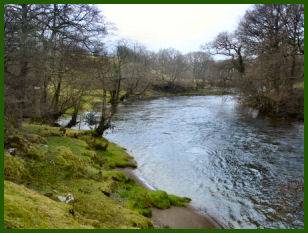
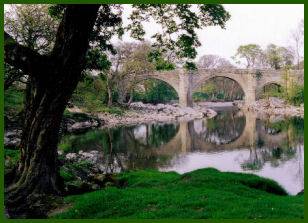

A few miles from its source, at Tebay, the fledgling river enters a rocky gorge, where the remains of a Roman fort can be seen at Low Borrowbridge. Both the M6 motorway and the West Coast Main Railway Line also run through the gorge. Below the pleasant East Cumbrian town of Sedbergh the Lune Valley widens, giving way to rich verdant pastures, before entering the characterful and historic town of Kirkby Lonsdale on the fringes of the Lake District National Park and the Yorkshire Dales National Park. Devil's Bridge, which spans the river at the town is a graceful three arched stone structure. Of obvious antiquity, the exact date of the bridge's construction is unknown, although it is known to have existed as early as the thirteenth century. Some excellent highly scenic riverside walks commence from the parking and picnic area by Devil's Bridge. At weekends, Devils bridge is a popular venue for motorbike enthusiasts.
Devil's Bridge at Kirkby Lonsdale and the view from the bridge
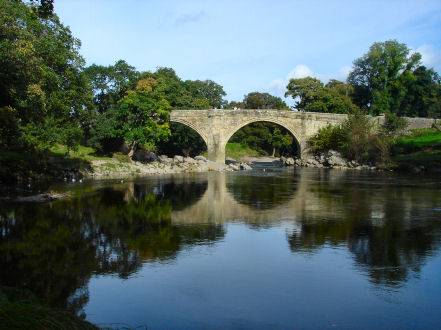

Ruskin's View
Ruskin's View , over a particularly stunning stretch of the river, can be viewed from just through the churchyard of the Norman church of St. Mary's at Kirkby Lonsdale and is breathtakingly beautiful. The artist, poet and conservationalist, John Ruskin visited the spot after viewing Turner's now famous painting of it, and was enchanted, appreciatively stating that it was "one of the loveliest scenes in England - therefore in the world".
Ruskin's View. Click to enlarge
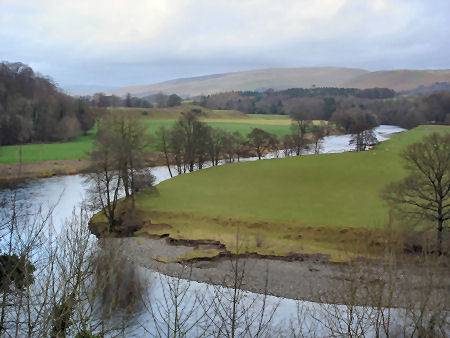
After leaving Kirkby Lonsdale the river meanders south into Lunesdale, which has a number of pretty villages. Charlotte Bronte's depiction of Brocklebridge church in the novel 'Jane Eyre' is based upon the church of Tunstall, in one of these villages. Along with her sisters, Elizabeth, Emily and Maria, she attended the boarding school at nearby Cowan Bridge. Roman altar stones were discovered in the churchyards at Tunstall and Halton.The stone cross at Halton contains Viking emblems.
The Crook o' Lune
The Crook o' Lune, situated over the border into Lancashire, is a stunning and much visited beauty spot. The river sweeps into a wooded ravine, forming a spectacular loop. Immortalised by Turner, the Crook o' Lune was also visited by the poet Thomas Grey in 1769, who recorded of it:-
"Every feature which constitutes a perfect landmark of the extensive sort is here not only boldly marked but also in the best position."
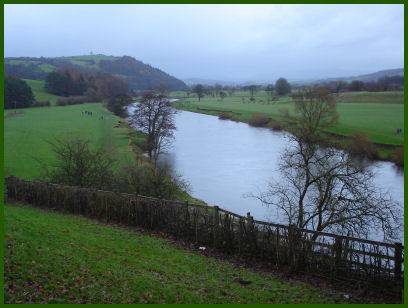
There is a Picnic Site and car park near Caton, just past the Penny Bridge. A network of well marked footpaths for walkers emanate from the site. Light refreshments are sometimes available at the car park.
From here the Lune enters the the historic town of Lancaster, where it meets the Irish Sea at Plover Scar.
